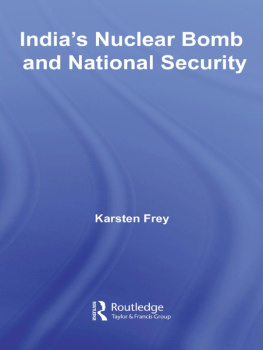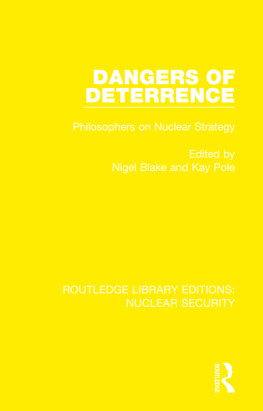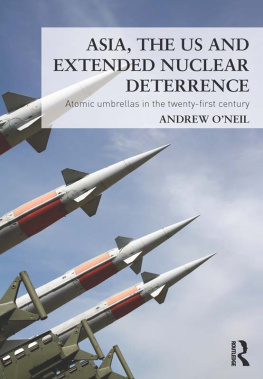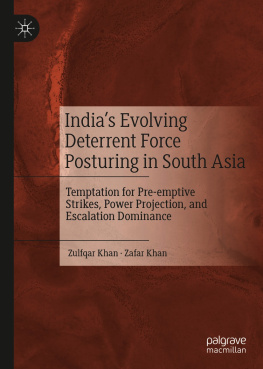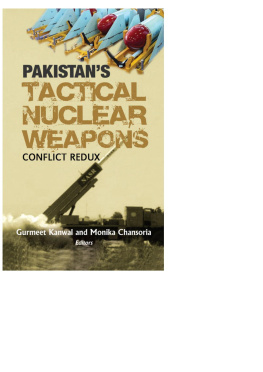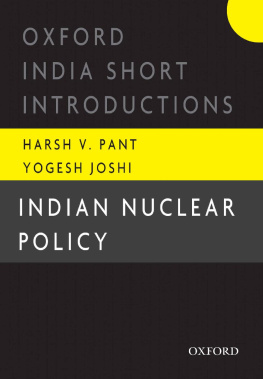Table of Contents
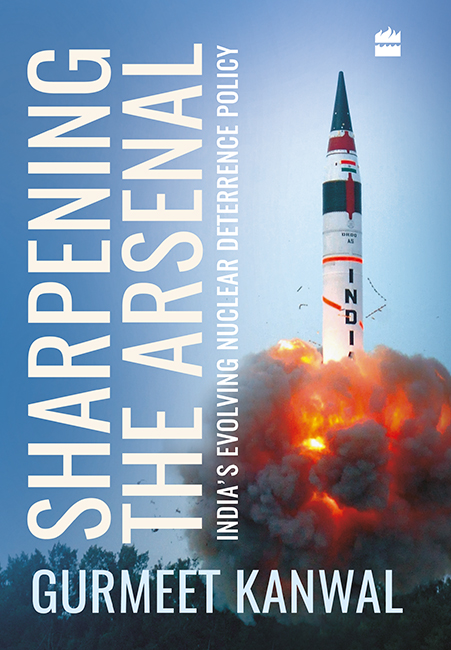
SHARPENING THE
ARSENAL
Indias Evolving Nuclear
Deterrence Policy
Gurmeet Kanwal

To my parents
Contents
A fter a very educative, challenging and professionally satisfying tenure at the Directorate General of Military Operations (DGMO) at the Army HQ, New Delhi, I opted for a two-year fellowship commencing in late-1998 at the Institute for Defence Studies and Analyses (IDSA), New Delhi. The Director, IDSA, (late) Air Cmde Jasjit Singh, a renowned fighter pilot and a brilliant analyst, liked the research projects that I proposed, but wanted me to work on something more substantive.
Why dont you work on a project on Indias nuclear forces? he asked. India had declared itself a state armed with nuclear weapons in May 1998; hence, the Directors desire for a research project on nuclear forces was justified. I confessed that I knew nothing about Indias nuclear forces and the Director countered, Isnt that a good place to begin? Those two fruitful years resulted in my first book: Nuclear Defence: Shaping the Arsenal (IDSA and Knowledge World, 2001). The book analysed Indias nuclear deterrence challenges and the doctrinal precepts and recommended a force structure, including a command and control system.
Oliver Wendell Holmes Jr has written, Mans mind stretched to a new idea never goes back to its original dimensions. Having been exposed to the intricacies of nuclear deterrence and knowledge of the guaranteed horrors that will follow if deterrence fails I have remained hooked to this ultimate domain of conflict with geo-strategic repercussions.
And, thanks to the doctrinal and the technological developments across the Radcliffe Line and the frequent fulminations of Pakistans leaders as well as the chiefs of its various terrorist organisations or jihad factories, the issues of nuclear deterrence and strategic stability in South Asia have remained current. In fact, strategic stability in South Asia is often described as a cottage industry!
Since Nuclear Defence: Shaping the Arsenal was published, much water has flowed down the Ganga and the Indus rivers. The new developments include Pakistans quest for full spectrum deterrence and tactical nuclear weapons (TNWs), and Indias Cold Start doctrine and trials of a ballistic missile defence (BMD) system. All of these developments have a major impact on strategic stability, which essentially comprises deterrence stability, crisis stability and arms race stability.
Over the years, I have written extensively on the emerging challenges and the developments in the nuclear deterrence domain by way of chapters in books, articles in journals and op-eds in newspapers. Goaded by colleagues in the nuclear enclave of the strategic community, I decided to put it all together and this is how the present volume took shape. Krishan Chopra, Publisher, HarperCollins, took up the project and I am grateful to him.
Sharpening the Arsenal: Indias Evolving Nuclear Deterrence Policy reviews the evolution and the present status of Indias nuclear doctrine, takes stock of the developments in the force structure, and looks briefly at Chinas and Pakistans nuclear stockpiles and delivery systems. The three main chapters are on the destabilising impact of TNWs, the likely implications of Indias execution of its Cold Start doctrine and, consequently, the ugly state of strategic stability in South Asia.
Other chapters highlight the developments in BMD systems, the impact of the Indo-US nuclear deal on deterrence, the growing threat of nuclear terrorism, the dire need for nuclear confidence-building and risk-reduction measures, coping with the current non-proliferation challenges and the slow progress towards nuclear disarmament. The book ends with a set of recommendations to upgrade the quality and the credibility of Indias nuclear deterrence.
Researched writing is always a very humbling experience because it brings into sharp focus how little one knows. Writing this book has been a superb learning experience for me, not the least because it has taught me how far down the road I still have to go. Due to the lack and opacity of information on nuclear deterrence in the public domain, despite my best efforts some errors are bound to have crept in. I am sure there are many shortcomings in the analysis as well. For all of these I accept full responsibility.
Some portions of my previously published articles, chapters and papers have been reproduced with the permission of the respective copyright holders, each of whom has been individually acknowledged in the foot notes. I am grateful to all of them.
Finally, my special thanks to Siddhesh Inamdar, who edited this book and added immense value to it. As during the publication of my last two books, it has been a pleasure working with the outstanding professionals comprising Team HarperCollins and my grateful thanks to all of them.
Brig. Gurmeet Kanwal (Retd)
November 2017
Regional Instability
F or over four decades, the security environment in South Asia has been characterized by high levels of instability. In fact, South Asia is the second most unstable region in the world after West Asia. The foremost causes of regional instability are the collusive nuclear weapons-cum-missile development programmes of China, North Korea and Pakistan; the strident march of radical extremism; the diabolical nexus between narcotics trafficking and terrorism; the proliferation of small arms and the volatility inherent in the rule of despotic regimes.
Instability on the Indian subcontinent is manifested, first and foremost, in the continuing conflict in the Af-Pak region. Continuing conflict in Afghanistan and its tense relations with Iran, Pakistan and the Central Asian Republics (CARs) are the greatest causes of uncertainty. The Pakistani armys struggle to gain control over the Tehreek-e-Taliban Pakistan (TTP), even as it supports and encourages various factions of the Afghan Taliban to launch attacks on their homeland, the fissiparous tendencies in Baluchistan and Gilgit-Baltistan, the upsurge in jihadi terrorism in Pakistans Punjab and Khyber-Pakhtoonkhwa provinces and the countrys gradual slide towards becoming a failed state despite some economic gains in the last five years, have added further to instability to the west of India.
Also symptomatic of an unstable and uncertain security environment in the South Asian region are Sri Lankas inability to find a lasting solution to its internal challenges; Bangladeshs gradual embrace of fundamentalist terrorism driven by jihadi forces and its struggle for economic upliftment to subsistence levels; the negative impact of the Maoist insurgency on Nepals fledgling democracy; the simmering discontent in Tibet and Xinjiang and a low-key uprising against Chinas repressive regime; and the Myanmar peoples nascent movement for democracy. In all these countries, socio-economic development has been slow and, consequently, per capita income is alarmingly low. Trans-border narcotics trafficking the Golden Triangle (Myanmar, Laos and Thailand) lies to the east of India and the Golden Crescent (Afghanistan, Iran and Pakistan) to its west and the proliferation of small arms make a potent cocktail. Ethnic tensions and fairly widespread radicalisation, worsened by the advent of the vicious ideology of the Islamic Caliphate, add further to regional instability. Clearly, while India itself cannot be described as an island of calm, it is ringed by a sea of instability.



